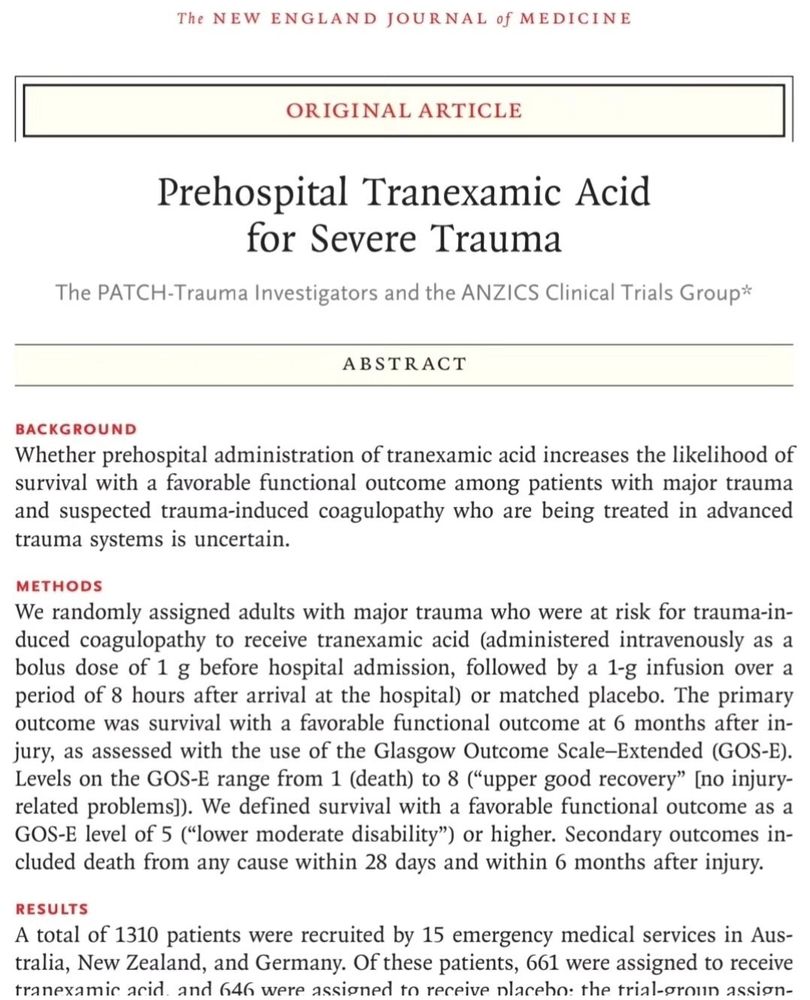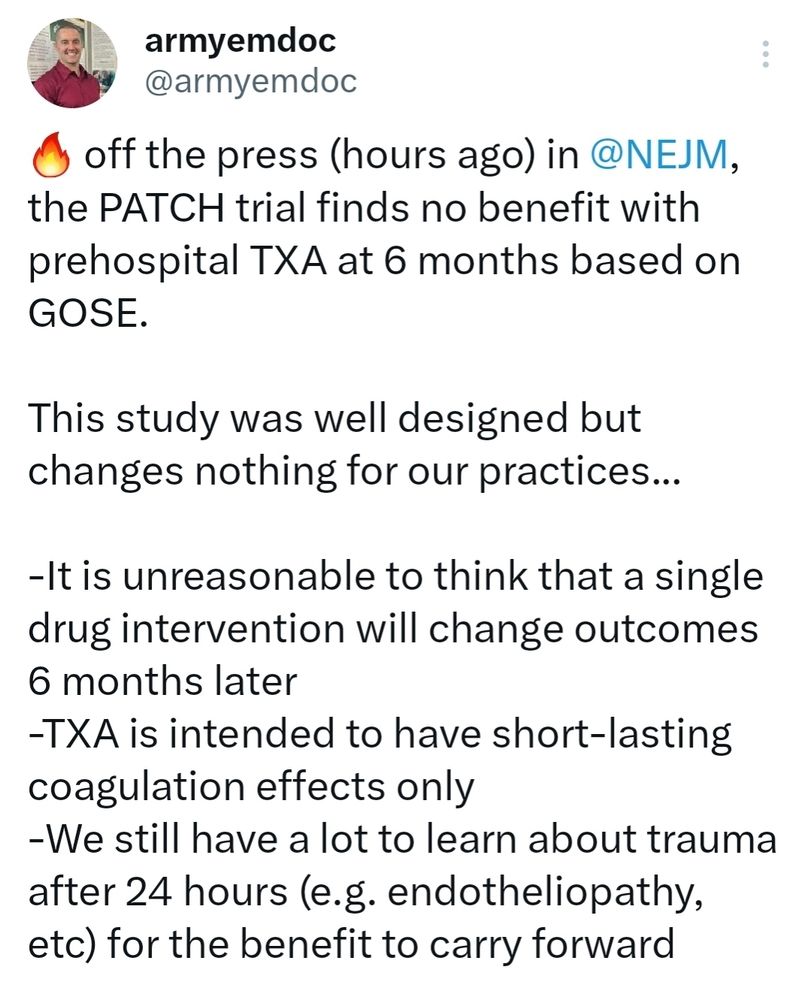
This is over-dramatized. Yes, they can be used in awake patients.
One study assessed the pain associated with humeral IO insertion and removal finding a mean reported pain of 3.9 and 2.2 on a 10-scale, respectively.
This is over-dramatized. Yes, they can be used in awake patients.
One study assessed the pain associated with humeral IO insertion and removal finding a mean reported pain of 3.9 and 2.2 on a 10-scale, respectively.
Well, yes, and no. Every hospital has their own thresholds for which they can request additional resources. This is sometimes referred to as a "catastrophic" activation.
Well, yes, and no. Every hospital has their own thresholds for which they can request additional resources. This is sometimes referred to as a "catastrophic" activation.
#emergency #emergencymedicine #military #army #armyemdoc
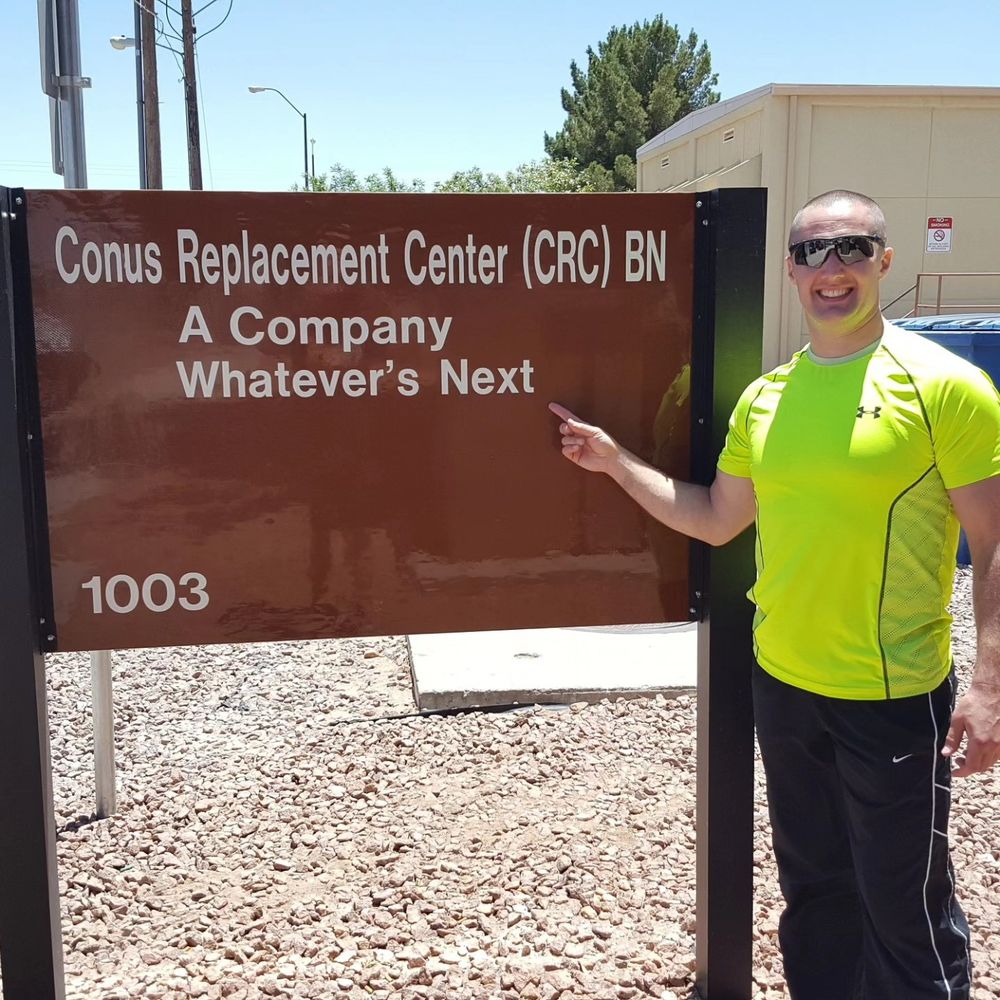
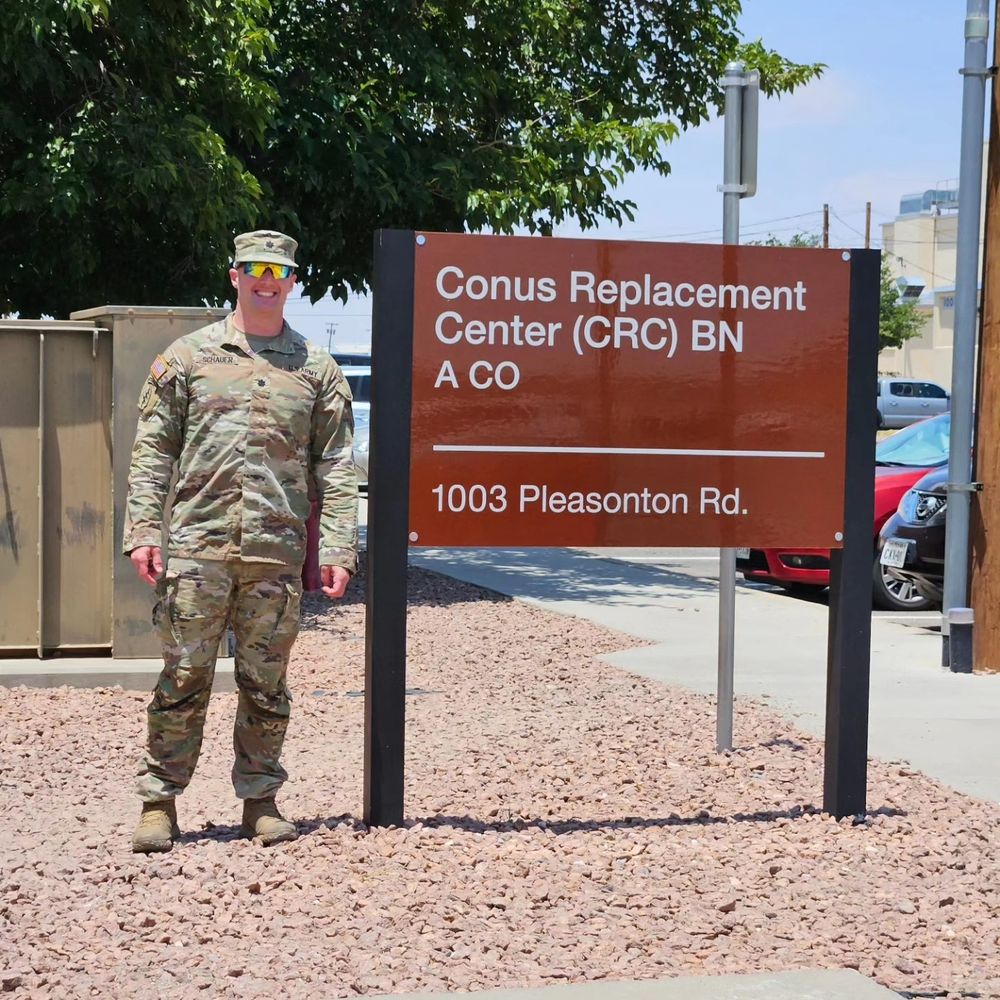
#emergency #emergencymedicine #military #army #armyemdoc
-Progression to NIV or intubation
-Death
Major limitations:
-Median time prone per day was 90m, goal was 2h
-Only 1/3 of those assigned proning qualified for the per-protocol
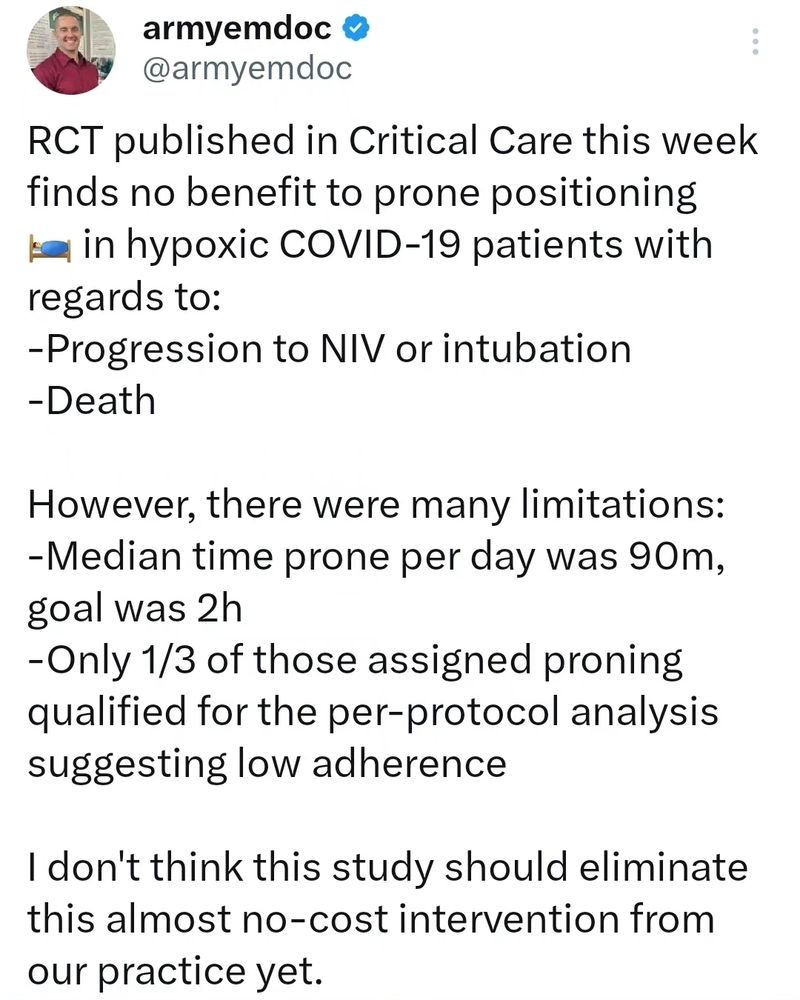
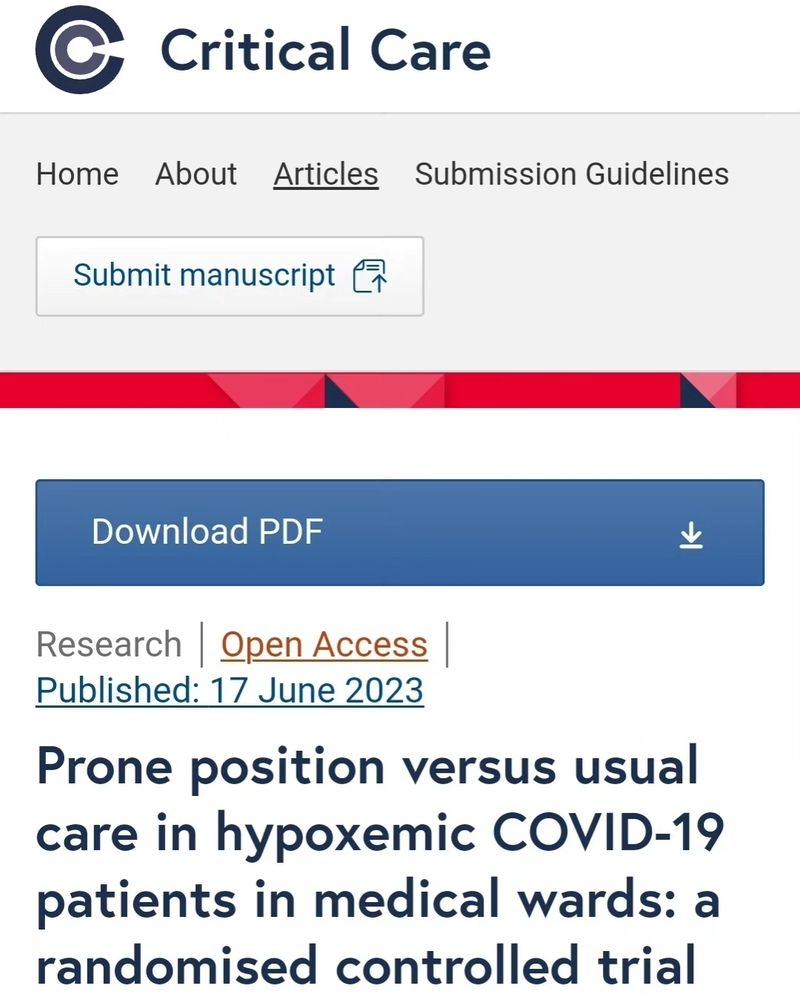
-Progression to NIV or intubation
-Death
Major limitations:
-Median time prone per day was 90m, goal was 2h
-Only 1/3 of those assigned proning qualified for the per-protocol
This systematic review assessed clinical methods when the gold standard waveform ETCO2 is not available:
Misting = 🗑 🗑 (FP=69%)
Auscultation = 🗑 (FP=18%)
Colormetric CO2 = 🤏 (FP=5%)
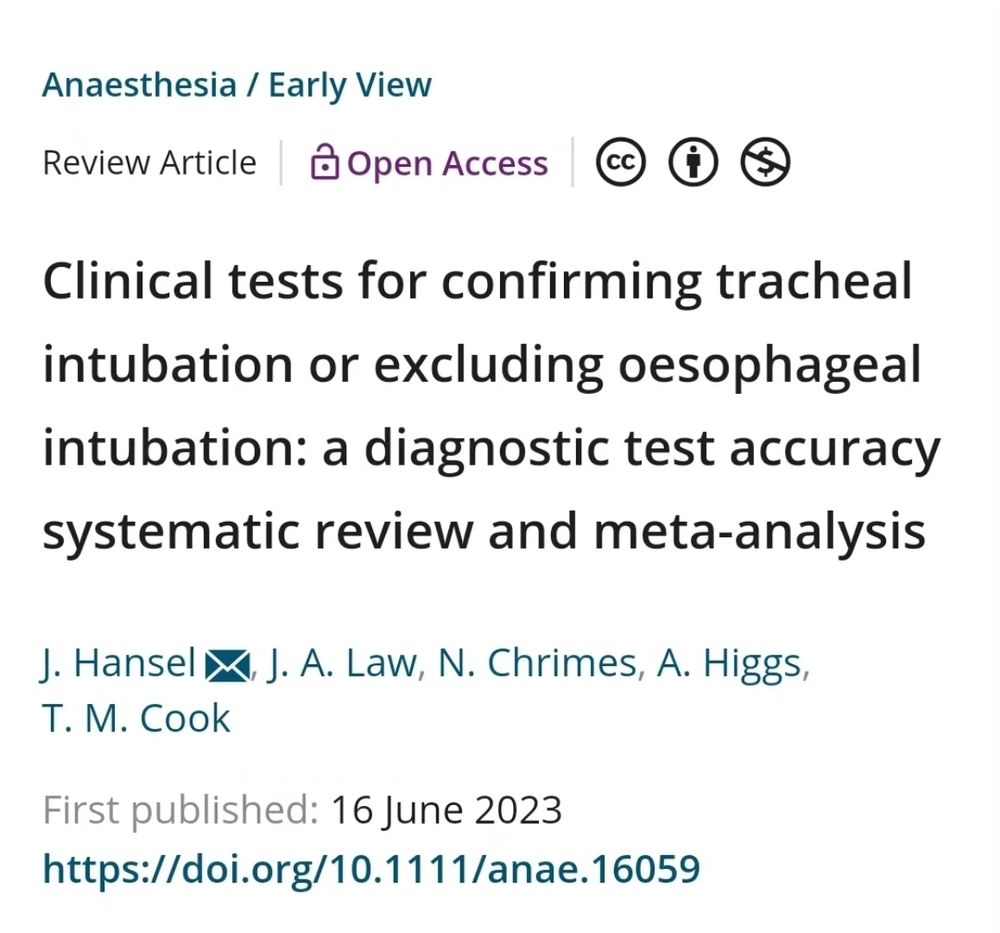
This systematic review assessed clinical methods when the gold standard waveform ETCO2 is not available:
Misting = 🗑 🗑 (FP=69%)
Auscultation = 🗑 (FP=18%)
Colormetric CO2 = 🤏 (FP=5%)
Chronic subdurals, not so much. It's often something we find incidentally, and they may or may not have symptoms (e.g. fell down, hit head, no symptoms, etc.).
The DESCA trial came out this week, and sheds light on what doesn't work.

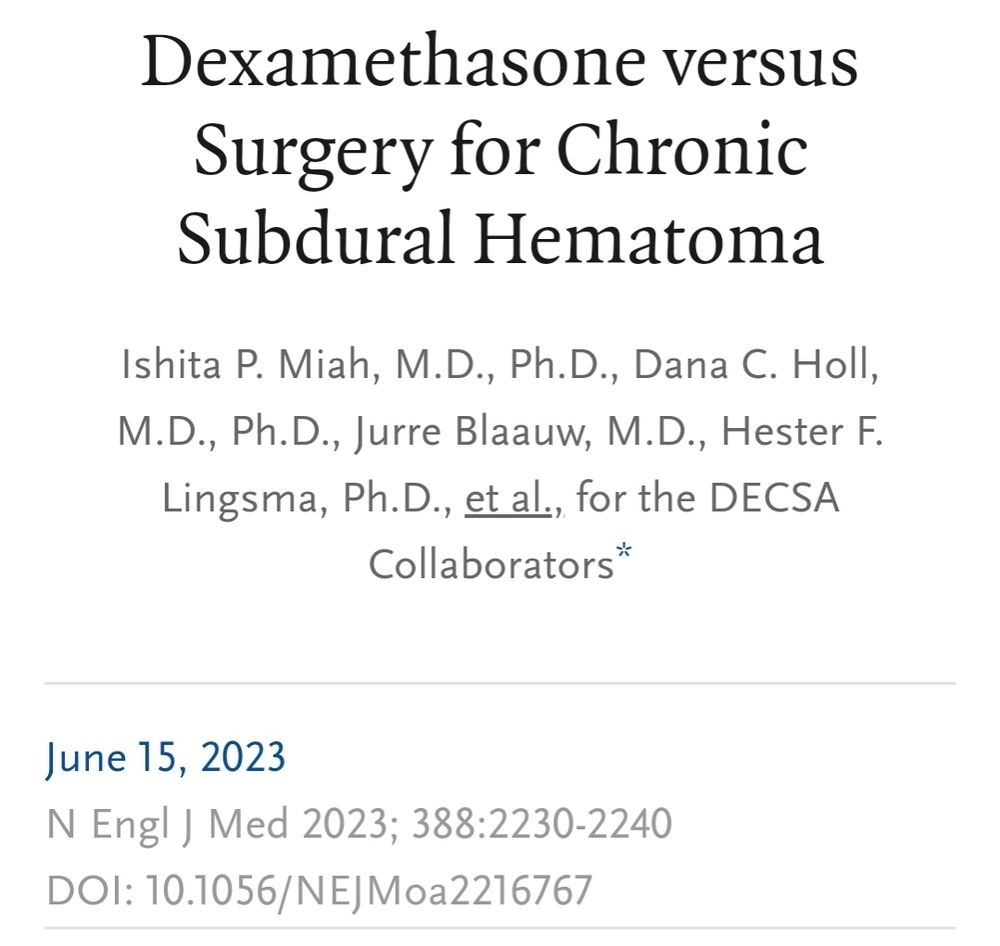
Chronic subdurals, not so much. It's often something we find incidentally, and they may or may not have symptoms (e.g. fell down, hit head, no symptoms, etc.).
The DESCA trial came out this week, and sheds light on what doesn't work.
It's clear that video laryngoscopy is superior to direct laryngoscopy.
The military needs to field VL technology to every medical footprint on the battlefield.
Time now.
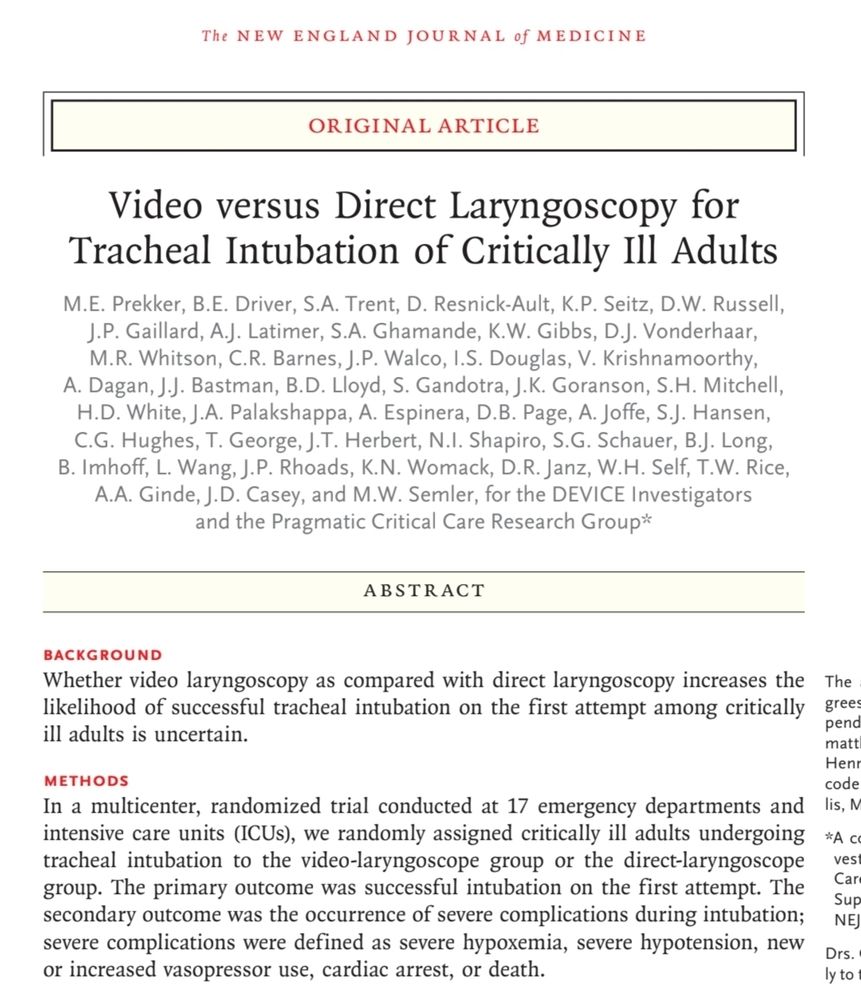
It's clear that video laryngoscopy is superior to direct laryngoscopy.
The military needs to field VL technology to every medical footprint on the battlefield.
Time now.
In fact, it was so inferior that we had to stop the trial early after DSMB review due to the clear benefit of VL.

In fact, it was so inferior that we had to stop the trial early after DSMB review due to the clear benefit of VL.
